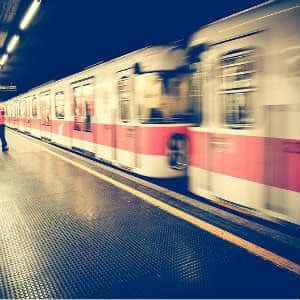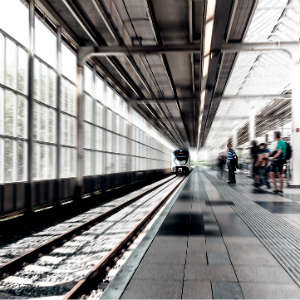Just a few months after a Long Island Railroad train derailed and injured more than thirty people, another train that was part of the LIRR system crashed, this time causing injuries to over one hundred of the passengers and employees on board.
First Major Accident Of 2017
On January 4th, 2017, the crowded commuter train carrying nearly 700 people was traveling from Queens to Brooklyn during rush hour around 9 a.m. As it approached Brooklyn’s Atlantic Terminal, many of the passengers stood up in order to get off at the station. But things didn’t go as they planned.
The train, which investigators have now determined was traveling at least twice the posted speed limit, didn’t stop as it should have. Instead, it continued on and crashed up and over a bumper block into a small room beyond the tracks. The impact caused the first few cars to derail and part of the track to come up and impaled the bottom of the car in front.
“People just went flying,” stated one of the passengers. “Bodies were everywhere.” Another man reported that it wasn’t just bodies – bags and glass from broken windows also flew through the air.
Emergency responders reported that at least 103 people were injured.
Despite the fact that the U.S. Federal Railroad Administration and the National Transportation Safety Board both responded and immediately sent investigators out, the actual cause of the crash is still unclear. The conductor claims to not remember anything about the crash.
Who Will Pay For The Medical Expenses Of The Injured?
This is an excellent question. The answer depends on their connection with the railroad – were they on the train as a passenger or an employee?
Passengers
The railroad should have insurance and a claims office through which passengers who were injured can file a claim. However, much like car insurance, every policy has it’s limits and passengers who are expecting to be fully reimbursed for their losses, such as medical expenses or lost wages, may be shocked to learn they likely will not get what they needed.
Employees
Most people are aware that if they are injured on the job, their employer, in most industries, is required to have workers’ compensation which will pay for their medical bills and a fraction of any lost
Instead, these employees must file a claim under the Federal Employers’ Liability Act (FELA). This can be both a good and a bad thing.
FELA provides coverage for losses that workers’ compensation does not, such as non-monetary losses such as physical pain and suffering or the loss of enjoyment in life. However, under this act, employees are only reimbursed if the railroad’s negligence resulted in the accident which caused them injuries.
So the big question is, if both passengers and employees have serious difficulty obtaining compensation for their losses, what can they do?
Personal Injury Lawsuits
These lawsuits are filed against the party whose negligence caused the accident and subsequent injuries. In many cases, there is more than one negligent party.
In this case, it is possible that the railroad, the owner of the train, a company who was responsible for regular mechanical checks of the train, or even the manufacturer of a defective part used in the train. Once investigators determine the cause of the crash, it is likely that many of the victims in this accident will choose to pursue legal action against those responsible.
The settlements and successful verdicts that can be obtained for the plaintiffs that file these complaints can provide the full amount needed for them to recover.
How Can An Attorney Help?
Not only can an attorney help from the very beginning with the claims process but they can also help to research the accident, collect witness statements, calculate past and future losses that can be expected, speak with the insurance company, negotiate a higher settlement, and represent the plaintiff in court.
